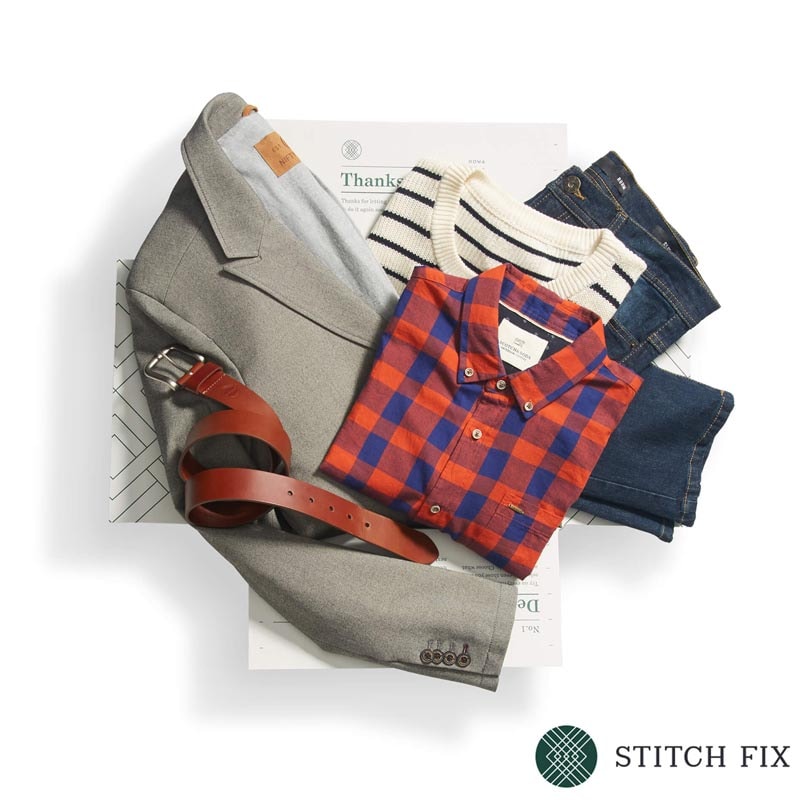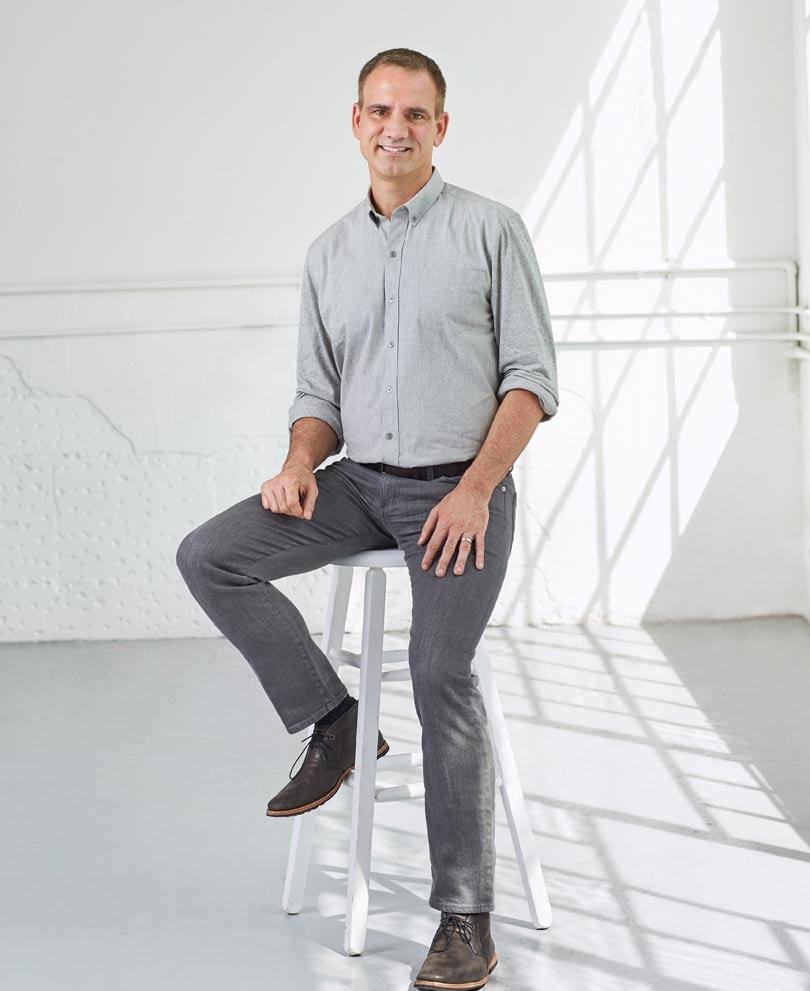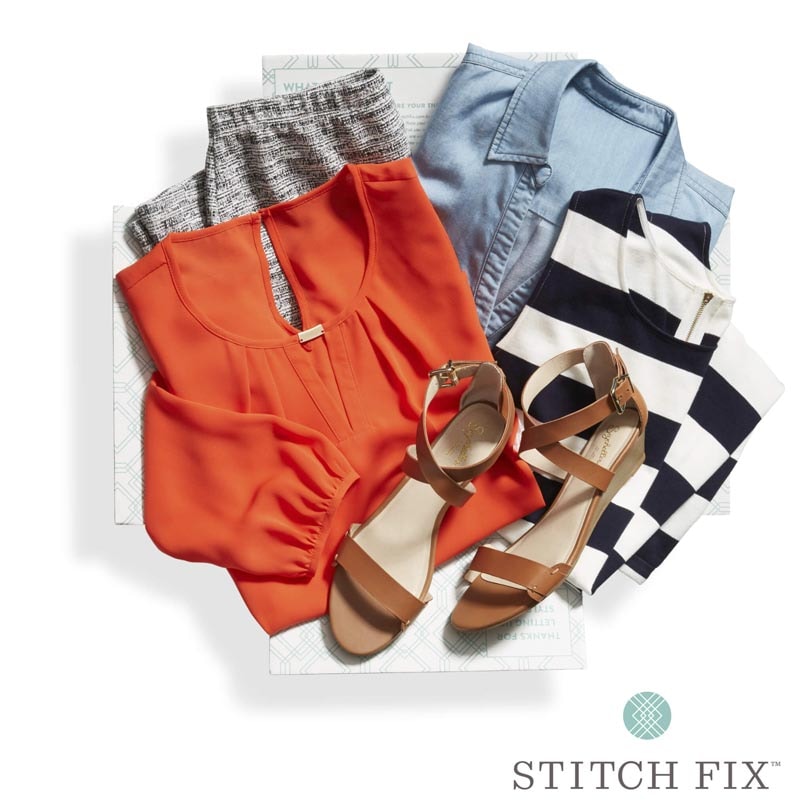“Data is the new oil and artificial intelligence is the oil drill”. These words, uttered by senior ecommerce strategist Jorij Abraham, closed the last IAF World Fashion Convention, held in the Netherlands in October. They followed a seminar in which all panelists unanimously urged retailers to gather data to understand their customers and offer them a personalized service. “Those who fail to do so will be swept away by competition”, warned Jeff Streader, CEO of Go Global Retail. But there was one more thing they were unanimous about: that San Francisco-based Stitch Fix is the biggest example of a fashion company using artificial intelligence to successfully consolidate customer loyalty.

Founded in 2011 by Katrina Lake, Stitch Fix is an online personal styling service in which a combination of algorithms and human stylists selects clothing, shoes and accessories from more than 1,000 brands for its clients. The content of the box (which the company calls a "Fix") is based on an initial questionnaire about the shopper’s size, height, age, gender, lifestyle, and preferences regarding color, style, fit, and price range (items cost between 25 US dollars and 600 US dollars). Once shoppers receive the "Fix", they are free to choose which items to buy and which ones to send back, thus providing Stitch Fix with additional insights to refine the choices next time. They are only charged for the items they keep and shipping is paid for by Stitch Fix, both ways. This way, the more a customer uses the service, the more personalized it gets. Although it is possible to receive packages regularly, Stitch Fix is not a subscription service per se: each client is free to choose when to schedule a “fix”, no strings attached.
Now with over 2.9 million clients across the US, the company is worth about 2 billion US dollars and was taken public last year, making the 34-year-old Lake the youngest woman in history to take a company public. She made her speech at the Nasdaq MarketSite carrying her toddler son in her arms.

For many analysts, Stitch Fix is the fashion version of the business model that made companies like Netflix and Spotify successful. “These consumer companies don’t operate based on segments, cohorts or classifications of customers anymore. They operate based on behavior and preferences of individual consumers”, said Gabe Weisert, co-author of Subscribed: Why the Subscription Model Will be Your Company’s Future and What to Do About It, in an email to FashionUnited. “Instead of designing and selling items to a largely anonymous client base, these businesses start with the customer first. There are as many different kinds of Netflix and Spotify home screens as there are Netflix and Spotify customers”.
Weisert firmly believes consumers will soon grow to expect the same level of personalization from all retailers. “It isn't limited to one or two industries, we’re seeing it take hold everywhere. Consumers can ride the wave of convenience and quite literally have a subscription for every aspect of their life: from food and transportation to music and television. There’s no limit and they’re ready for it”. Ana Roncha, Course Leader of the master’s degree in Strategic Fashion Marketing at London College of Fashion, agrees: “when we let someone else curate choices for us, there is a sense of exclusivity and personalization that they were not used to or isn’t being provided by bigger brands”.
However, this business model doesn’t come without risks. “A couple of mistakes and customers may opt out”, noted Roncha. “Stitch Fix does have a great system in place and structure to support its business model. But it definitely takes time to know every detail of your client, their preferences. Consumers don’t always have the patience to wait for that!”
FashionUnited spoke to Eric Colson, Chief Algorithms Officer at Stitch Fix to learn about the company’s business model in more detail.

Before we begin, Eric, please introduce yourself to our readers. Who are you and why did you join Stitch Fix?
I used to work at Netflix as Vice President of Data Science and Engineering and was introduced to Katrina in the early days of the company, back when it only offered women’s apparel. I was very intrigued when she told me about the concept, I love the boldness of the model. After all, clients don’t get to see the clothes before they receive the Fix, which is so different from Netflix. Netflix doesn’t ask you anything up front, it learns about you over time through your viewing history. I had never worked at a company before that had so much data from the start! I also liked the combination of human stylists and machines, because humans can do some things a lot better than machines and vice-versa.
I first joined Stitch Fix in 2012 as an adviser, but got so excited about it I only lasted five months in that role. What got me to join the business full time was seeing how my wife and friends were using the service. At first I thought it would be just a complement to traditional shopping, but they actually stopped going to brick and mortar stores.
Stitch Fix relies on a “combination” of humans and machines. How much of the service is performed by humans and how much by machines?
We run algorithms through the entire company. We basically use machines for everything that can be calculated. The style profile clients fill out before they even start using the service offers us a ton of information already. We also collect a lot of information internally about the merchandise itself: collars, buttons, zippers, pocket position, differences in sizing between different brands… Anything that can be relevant to match the items with the clients.
But there are things machines just can’t do, such as empathizing with others, improvising, having a sense of aesthetics. Those tasks will require humans forever, probably. If a client says “I’m looking for an outfit for my ex-boyfriend’s wedding”, for example, only a human can understand what that means.
Our third set of data is feedback data. We learn over time if the choices we made were a good match. We don’t care about averages, what we really care about is whether something looks good on you.
The feedback data also helps us to manage the inventory and buy merchandising. How much should we buy from each different size? We can even use that to design our own clothes. We’ve been designing clothes algorithmically ourselves for two years now. The algorithms take the heavy lifting of searching for new styles by taking elements from successful old styles and then recombining silhouettes, colors and patterns to make something new, which we call "Hybrid Designs". We’ve released 120 of these designs for women so far and the results are phenomenal.
”Vendors also love engaging with us because it’s a much more efficient way to connect to customers who will love their products. Brick and mortar retail is inefficient, you have to rely on branding and wait for customers to find you”
How is the relationship between Stitch Fix and the fashion brands it buys from? Do you earn commissions for sales? Do you provide some of the feedback data to them, so they can improve their brands?
Yes we do provide feedback to brands on how their styles are performing. We send them a dashboard showing what type of person buys their clothes and what they say about it. Vendors love it because traditional retailers give them nothing back about who bought their products, but we can tell them “hey, your extra large is doing fantastic, but your extra small is a bit off” or “your main customer is actually older than you thought”.
Vendors also love engaging with us because it’s a much more efficient way to connect to customers who will love their products. I mean, we pay for the shipping, so we have to make sure customers love the products. Brick and mortar retail is inefficient, you have to rely on branding and wait for customers to find you. Finally, they love us because we are a full price channel. We never sell anything with a discount.
As for commissions, no. No commissions to buyers or stylists or vendors. We felt like that would create the wrong standards, it’s not in our customers’ best interest. So, we decided that the buying team will never influence the styling team, to keep things pure and ensire we're sending the best items to each client, regardless of price.

Can you highlight three memorable moments of the company’s history?
The third version of our algorithm was a particularly exciting moment. We set up an A/B test with two sets of clients. Three weeks into the experiment, we even thought the answers were wrong because they were so good! So we gave it just a few more days, when the test was actually supposed to run for a few months. I remember us looking at each other and thinking: “is this for real?” and all the high fives in the hallway.
Each time we expanded our offering was exciting, too. We started with womenswear only, offering mostly blouses and sweaters. I remember when we expanded into denim, we were all so worried about it because finding the perfect fit for denim is difficult. We were also nervous because of the prices, since we decided to buy the best options and those were a bit more expensive. We thought: ‘what if this is a little more than people are willing to pay?’ But luckily we were able to do that really well and, as it turns out, when a pair of jeans fits perfectly, people are willing to pay more for it.
Last but not least, I definitely have to mention our IPO. After six years of building the company, it was such a magical day. Fundraising was never fun, we heard a lot of no’s from venture capitalists early on. Then, when Katrina was about to push the button to open the stock at the Nasdaq, she took her son and brought him to the podium with her. It was unplanned, but I think it symbolizes the challenges of a female CEO, it was a female CEO telling the world: “hey, I’m a woman and I'm a CEO and a mother and I’m doing this”.

Do you think highly personalized subscription services such as Stitch Fix are the future of retail?
I don’t consider us a subscription service because there is no obligation whatsoever, it’s not like a gym membership. In the beginning we didn’t even have the “auto ship” feature. We added it for convenience, like “hey, do you want to not have to push that button every single time to schedule a Fix?”. But we didn’t even think people would want it! It took us by surprise that the majority of people checked that box.
As for personalization, yes, I think it’s going to be the norm. We’re already seeing the consumer behavior change here in the US, the expectation is already there. It’s so time consuming to understand which size you are in each brand, for example. So we’ve shifted that burden to us, as it’s much easier for us to do it. We’ll take care of it, so you don’t have to worry. I think people in the future will say ‘remember we had to do all that?’. So I wish there were companies like Stitch Fix in other domains. I’d love to have a Stitch Fix for wine!
Stitch Fix recently announced it will be entering the UK market in 2019. Anything you can share with us already?
I can’t disclose exactly when we will launch in the U.K, but there is a team working on it now. We’re already hiring people stylists locally and adding U.K. brands to the platform, plus our algorithms will be adapted to the UK. We’re really focusing on how to translate Stitch Fix for this brand-new market – what travels well and what things we need to tweak now. We’ll plan to serve both women and men in the U.K. at launch with price points ranging from 40-150 pounds per item. We’re very excited to see how things will go.
Any plans to launch in more countries?
Eventually I think we will, but we’ve got our hands full now with the UK and we’re only 8 years into it. We want to make sure we get it right. We’re not interested in expanding at all costs, it’s important to pace our growth, take time to learn and make sure if or when we do expand further, we are ready to make it a success.
No comments:
Post a Comment
All the postings of mine in this whole forum can be the same with anyone in the world of the internet. Am just doing a favor for our forum users to avoid searching everywhere. I am trying to give all interesting informations about Finance, Culture, Herbals, Ayurveda, phycology, Sales, Marketing, Communication, Mythology, Quotations, etc. Plz mail me your requirement - amit.knp@rediffmail.com